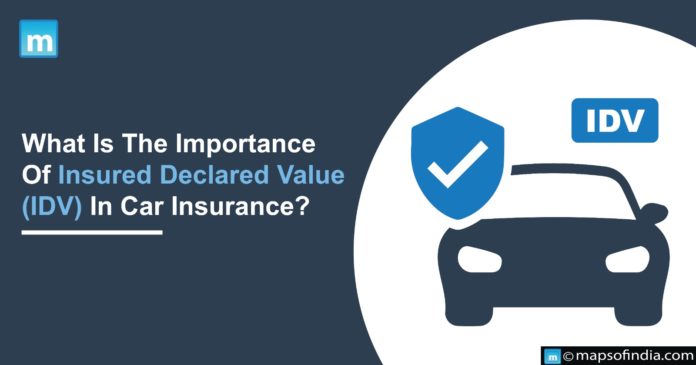The maximum sum an insurance company will give the policyholder if their covered vehicle is stolen or totalled is known as the Insured Declared Value (IDV). The amount protected under the policy represented the car’s current market value when the insurance policy was bought.
The manufacturer’s suggested retail price of the car, less any age-related depreciation, is used to determine the IDV. Depreciation is the decline in a vehicle’s value from normal wear and tear. The insurance company predetermines the depreciation rate and changes according to the age of the vehicle.
Why is IDV important in four-wheelers?
The IDV plays a vital role in determining car insurance coverage and premium estimation. A higher IDV in four-wheeler insurance indicates more extensive coverage and a higher premium. Conversely, a lower IDV means a cheaper premium due to lower coverage. In case of vehicle damage, the insurance company will evaluate the cost and payout based on the IDV and the extent of the damage. If the damage exceeds 75%, the insurer will pay the entire IDV in case of a total loss. A higher IDV indicates a greater risk as it signifies a higher vehicle market value.
The insurance company and the insured may occasionally agree to undervalue the four-wheeler. The Insured Declared Value for four-wheeler insurance is consequently decreased. While the insurance company provides more coverage, the insured person consents to pay cheaper rates.
Factors Affecting IDV
Several factors impact the Insured Declared Value (IDV) in four-wheeler insurance, which includes:
- the car’s manufacturer, make, and model, as well as its age based on the registration date
- the city of registration since market prices may vary in different states and cities
- whether an individual or a business owns the car can also affect the IDV.
How Is Insured Declared Value Calculated for a Four-Wheeler?
The IDV is calculated by deducting the vehicle’s market value from its depreciation costs. If the vehicle has any add-ons, those things’ depreciation value is also considered. The following is the IDV formula used to calculate four-wheeler insurance:
For New Four-Wheelers
The announced market pricing of the manufacturing business will be considered. Depreciation has been subtracted from the ex-showroom pricing. The Insured Declared Value for auto insurance increases to 95% since a brand-new four-wheeler loses 5% of its value in the first six months.
IDV = Market Price Stated by the Firm – Depreciation Costs
For Old Four-Wheelers
On earlier four-wheelers, the insured declared value is calculated similarly. It considers the same factors as contemporary four-wheelers do. It is based on the depreciation over time and the current market value of the manufacturers.
IDV = Present Market Worth – Depreciation Value
More Add-Ons in the Four-Wheeler
If you upgrade your four-wheeler with accessories, the insurance company will consider that. These components’ depreciation and a market value increase the Insured Declared Value of a four-wheeler. It doesn’t matter if the four-wheeler is brand-new or worn. The depreciation costs of these additional features are modest if the car is new. On the other hand, the depreciation value increases as the four-wheelers get older.
IDV = Current Market Value As Stated By The Manufacturing Firm – Depreciation Costs – Accessory Expenses – Depreciation Value of the Components




